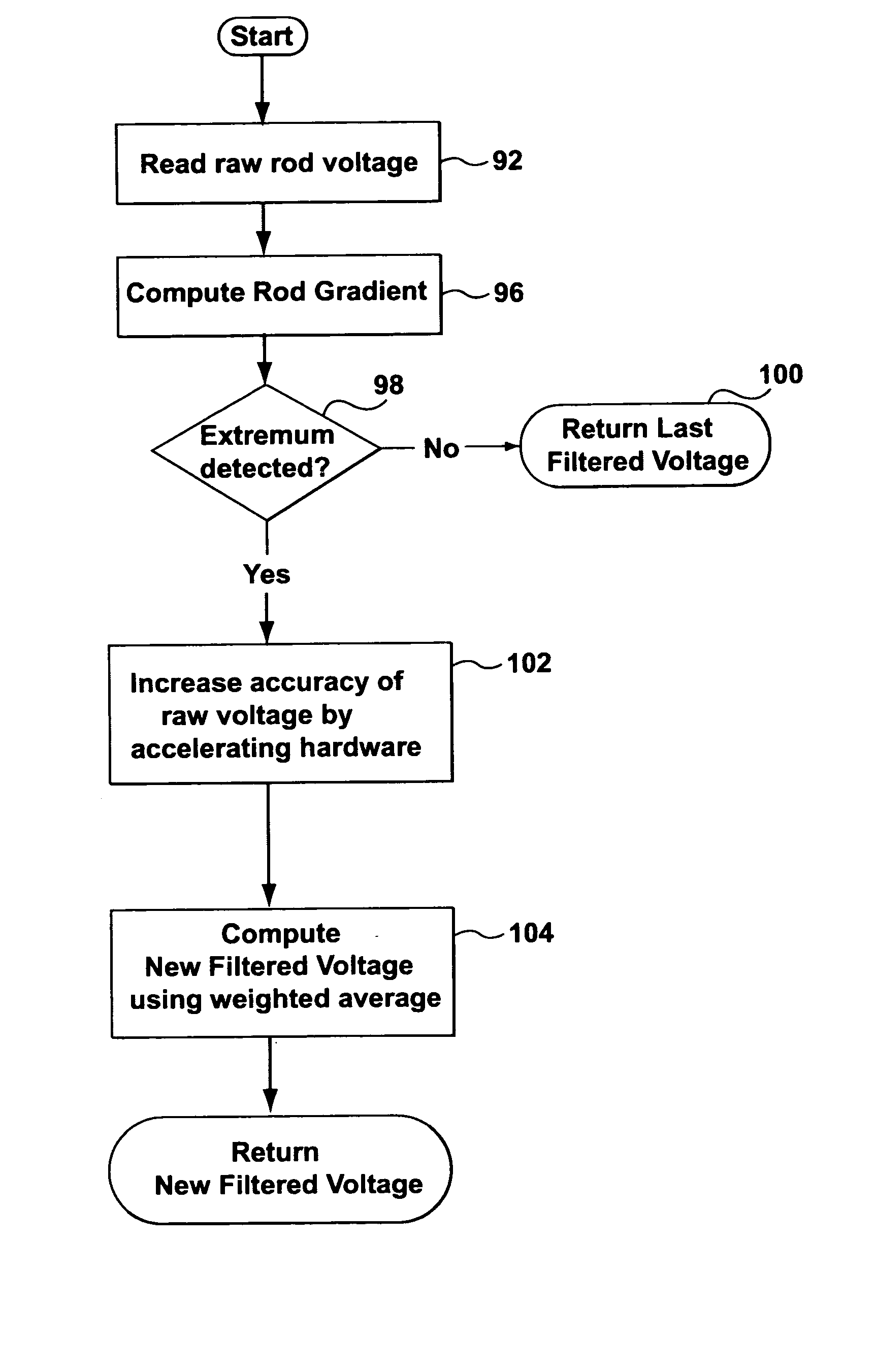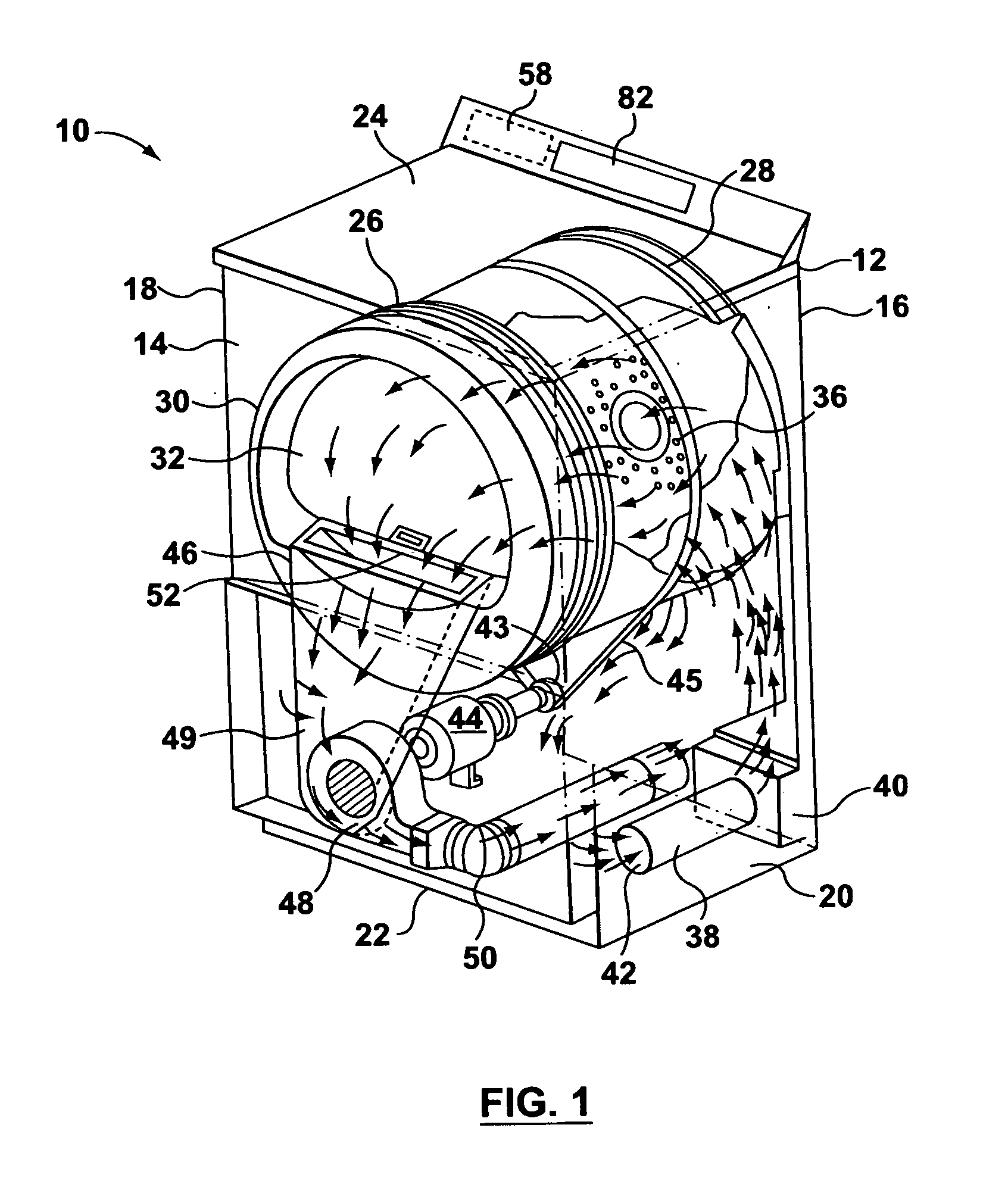Clothes dryer sensor compensation system and method
a technology of compensation system and clothing dryer, which is applied in the direction of dryers, drying machines with progressive movements, lighting and heating apparatus, etc., can solve the problems of high variability of the voltage signal of the moisture sensor, inability to accurately reflect the true moisture content of clothes, and inability to accurately reflect the moisture content of samples, etc., to achieve the effect of reducing the noise contained
- Summary
- Abstract
- Description
- Claims
- Application Information
AI Technical Summary
Benefits of technology
Problems solved by technology
Method used
Image
Examples
Embodiment Construction
[0029]FIG. 1 shows a perspective view of an exemplary clothes dryer 10 that may benefit from the present invention. The clothes dryer includes a cabinet or a main housing 12 having a front panel 14, a rear panel 16, a pair of side panels 18 and 20 spaced apart from each other by the front and rear panels, a bottom panel 22, and a top cover 24. Within the housing 12 is a drum or container 26 mounted for rotation around a substantially horizontal axis. A motor 44 rotates the drum 26 about the horizontal axis through, for example, a pulley 43 and a belt 45. The drum 26 is generally cylindrical in shape, having an imperforate outer cylindrical rear wall 28 and a front flange or wall 30 defining an opening 32 to the drum. The front wall 30 and opening 32 are normally closed by a door (not shown). Clothing articles and other fabrics are loaded into the drum 26 through the opening 32. A plurality of tumbling ribs or baffles (not shown) are provided within the drum 26 to lift the articles a...
PUM
 Login to View More
Login to View More Abstract
Description
Claims
Application Information
 Login to View More
Login to View More - R&D
- Intellectual Property
- Life Sciences
- Materials
- Tech Scout
- Unparalleled Data Quality
- Higher Quality Content
- 60% Fewer Hallucinations
Browse by: Latest US Patents, China's latest patents, Technical Efficacy Thesaurus, Application Domain, Technology Topic, Popular Technical Reports.
© 2025 PatSnap. All rights reserved.Legal|Privacy policy|Modern Slavery Act Transparency Statement|Sitemap|About US| Contact US: help@patsnap.com



